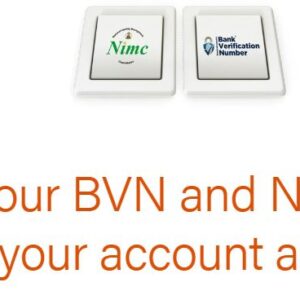
Outline:
1: How to Navigate Student Loans, Repayment, Forgiveness and Refinancing Options: The Ultimate Guide to Financial Freedom
2: Introduction: Understanding the Student Loan Landscape in 2025
- The importance of mastering student loan navigation
- Why student loans remain a critical financial challenge
- Overview of the guide and what readers will learn
3: How to Navigate Student Loans, Repayment, Forgiveness and Refinancing Options
- Defining key concepts: loans, repayment, forgiveness, refinancing
- Why comprehensive knowledge matters
- How navigating these elements impacts financial health
4: Understanding Types of Student Loans
- Federal vs private student loans
- Subsidized vs unsubsidized loans
- Parent PLUS loans and private alternatives
5: How to Identify Your Loan Types and Terms
- Reading your loan documents
- Using official federal loan portals
6: How to Manage Student Loan Repayment
- Federal repayment plans overview
- Income-driven repayment plans explained
- Standard, graduated, and extended plans
7: How to Choose the Right Repayment Plan for Your Financial Situation
- Assessing your income and expenses
- Planning for long-term vs short-term goals
8: How to Apply for Student Loan Forgiveness
- Overview of Public Service Loan Forgiveness (PSLF)
- Teacher Loan Forgiveness and other programs
- Eligibility criteria and common pitfalls
9: How to Maximize Your Chances of Forgiveness Approval
- Keeping accurate payment records
- Meeting all program requirements precisely
10: How to Refinance Your Student Loans for Better Terms
- What refinancing means and when to consider it
- Pros and cons of refinancing federal vs private loans
- How to shop for the best refinancing rates
11: How to Qualify for Student Loan Refinancing
- Credit score, income, and debt-to-income ratio
- Documents and preparation tips
12: How to Avoid Common Student Loan Mistakes
- Missing payments and penalties
- Consolidating without understanding consequences
- Ignoring loan terms and communication
13: How to Use Technology to Manage Your Student Loans
- Best apps and tools for tracking and repayment
- Automating payments to avoid late fees
14: How to Stay Informed About Changing Policies and Options
- Monitoring government updates
- Consulting trusted financial advisors
15: How to Seek Professional Help When Overwhelmed
- Financial counseling and loan servicer assistance
- Knowing when to escalate issues
16: How to Balance Student Loan Repayment With Other Financial Goals
- Saving, investing, and managing debt simultaneously
- Creating a realistic budget
17: The Psychological Impact of Student Loans and How to Cope
- Managing stress and anxiety related to debt
- Seeking support and financial education
18: Conclusion: Mastering How to Navigate Student Loans, Repayment, Forgiveness and Refinancing Options for a Secure Future
- Recap of essential strategies
- Encouragement to take control today
19: FAQs
- How do I find out what type of student loans I have?
- What are the best repayment plans for low-income borrowers?
- Can I refinance federal student loans without losing forgiveness options?
- How long does the student loan forgiveness process take?
- What happens if I miss a student loan payment
How to Navigate Student Loans, Repayment, Forgiveness and Refinancing Options: The Ultimate Guide to Financial Freedom

Introduction:
Understanding the Student Loan Landscape in 2025
In 2025, millions of Americans face the daunting challenge of managing student loans, often feeling overwhelmed by confusing terms, mounting debt, and an array of repayment options. Understanding how to navigate student loans, repayment, forgiveness and refinancing options is critical for anyone seeking to regain control of their finances and build a secure future.
Student loans remain one of the largest forms of consumer debt in the United States. Whether you’re a recent graduate, a mid-career professional, or someone returning to school, knowing your rights and options is vital. This comprehensive guide will walk you through everything you need to know about managing your student debt effectively—from understanding different loan types to exploring forgiveness programs and refinancing strategies.
Navigating student loans can be one of the most challenging financial journeys anyone embarks on, especially in 2025 when education costs have soared, and loan programs have become increasingly complex. Understanding how to navigate student loans, repayment, forgiveness and refinancing options is essential not only to avoid financial pitfalls but to secure a pathway toward long-term financial freedom.
For many borrowers, student loans represent a significant portion of their debt, and managing them effectively can make the difference between financial strain and stability. With rising tuition fees, changes in federal policies, and a growing variety of repayment and forgiveness programs, the landscape has evolved dramatically in recent years. It’s no longer enough to just borrow money; you need to know how to strategically handle that debt throughout your repayment life cycle.
Whether you are a recent graduate starting your career, a mid-career professional juggling multiple financial goals, or someone thinking ahead about education funding, this guide will empower you with the knowledge to make smart decisions. From identifying your loan types to choosing the right repayment plan, exploring forgiveness opportunities, and understanding refinancing options, this comprehensive roadmap will help you navigate every step confidently.
Many borrowers struggle with confusion about their options or fear making mistakes that could cost them thousands of dollars or damage their credit. This guide breaks down the complexity into simple, actionable advice tailored for 2025’s environment. You will learn how to take control, avoid common traps, and optimize your loan management strategy to reduce stress and accelerate your journey to debt freedom.
As student loans continue to be a pressing financial issue nationwide, equipping yourself with the right tools and insights on how to navigate student loans, repayment, forgiveness and refinancing options will ensure you not only survive but thrive financially in the years ahead.
By mastering these components, you can reduce stress, avoid costly mistakes, and position yourself for long-term financial freedom.
How to Navigate Student Loans, Repayment, Forgiveness and Refinancing Options
When you ask how to navigate student loans, repayment, forgiveness and refinancing options, you’re seeking a roadmap through one of the most complex areas of personal finance. Navigating means understanding the different loan programs, how repayment works, eligibility for forgiveness, and when refinancing might benefit you.
Each of these elements affects your financial well-being, credit health, and overall quality of life. This guide is designed to empower you with clear, actionable information tailored to 2025’s loan landscape.
Understanding Types of Student Loans
There are two primary categories of student loans: federal and private.
- Federal loans are backed by the government and come with benefits like income-driven repayment plans and forgiveness programs.
- Private loans are offered by banks or lenders and often have stricter terms and less flexibility.
Subsidized loans don’t accrue interest while you’re in school, while unsubsidized loans do. Understanding these differences helps you make informed repayment decisions.
How to Manage Student Loan Repayment
Federal repayment plans include:
- Standard Repayment Plan: Fixed payments over 10 years.
- Graduated Repayment Plan: Payments start low and increase.
- Extended Repayment Plan: Longer term, lower payments.
- Income-Driven Repayment Plans: Payments based on your income and family size.
Choosing the right plan depends on your financial situation and goals.
How to Apply for Student Loan Forgiveness: A Step-by-Step Guide to Getting Relief
Applying for student loan forgiveness can be a game-changer in your financial journey, but many borrowers find the process confusing and overwhelming. Knowing how to apply for student loan forgiveness correctly increases your chances of approval and helps you maximize the benefits available to you in 2025.
Here’s a comprehensive step-by-step guide to help you navigate the student loan forgiveness application process confidently:
1. Determine Your Eligibility for Forgiveness Programs
Before applying, it’s crucial to understand which forgiveness programs you qualify for. The most popular include:
- Public Service Loan Forgiveness (PSLF): For borrowers working full-time in qualifying public service jobs (government, nonprofit organizations).
- Teacher Loan Forgiveness: Available for teachers who work in low-income schools for five consecutive years.
- Income-Driven Repayment (IDR) Forgiveness: After making 20 or 25 years of payments under an IDR plan, the remaining balance may be forgiven.
- Closed School Discharge, Total and Permanent Disability Discharge, and other specialized programs.
Check the eligibility criteria carefully on official websites like the U.S. Department of Education’s Federal Student Aid site.
2. Gather Necessary Documentation
Successful applications require thorough documentation:
- Proof of employment (pay stubs, employer certification forms) for PSLF or Teacher Forgiveness.
- Detailed records of all student loan payments made.
- Tax returns and income documentation for income-driven forgiveness plans.
- Copies of your loan statements and promissory notes.
Having this paperwork ready will streamline your application and reduce processing time.
3. Enroll in a Qualifying Repayment Plan
Most forgiveness programs require you to be on a specific repayment plan:
- PSLF and IDR forgiveness require enrollment in an income-driven repayment plan.
- Make sure your payments are up-to-date and counted towards forgiveness.
If you’re not already on a qualifying plan, contact your loan servicer to switch before applying.
4. Submit the Forgiveness Application
Applications vary by program but usually involve:
- Completing official forms like the PSLF Employment Certification Form or Teacher Loan Forgiveness Application.
- Providing all supporting documentation.
- Submitting applications online via your loan servicer’s portal or mail if required.
Always use official sources to download forms and avoid third-party services that may charge fees unnecessarily.
5. Track Your Application Status
After submission:
- Keep copies of all submitted documents.
- Monitor your application status regularly through your loan servicer’s website.
- Respond promptly to any requests for additional information.
6. Understand Potential Challenges and How to Address Them
Common challenges include:
- Ineligible employment: Not all jobs qualify for PSLF, so verify your employer’s status.
- Incorrect payments: Payments must be on-time and for the full amount.
- Documentation errors: Missing or incomplete forms can delay processing.
If your application is denied, you can appeal or seek help from a student loan counselor.
7. Plan Ahead for Tax Implications
Currently, most federal loan forgiveness programs do not consider forgiven amounts as taxable income, but laws can change. Consult a tax professional to understand the implications for your specific situation.
Tips for a Successful Student Loan Forgiveness Application
- Stay organized and keep detailed records of payments and employment.
- Submit employment certification forms annually or whenever you change jobs.
- Communicate regularly with your loan servicer to ensure all requirements are met.
- Use resources like the Federal Student Aid website for accurate information and updates.
How to Refinance Your Student Loans for Better Terms
Refinancing can lower interest rates or monthly payments but may eliminate federal benefits.
- Compare offers from different lenders.
- Check eligibility based on credit and income.
How to Avoid Common Student Loan Mistakes
- Missing payments harms credit.
- Consolidating loans without research can increase costs.
- Ignoring lender communication leads to missed options.
How to Use Technology to Manage Your Student Loans
Apps like Student Loan Hero, Mint, and FedLoan Servicing can help you track balances, due dates, and payments.
READ MORE: How to Use Renters Insurance to Safeguard Your Belongings: The Ultimate Guide to Protecting What Matters Most
Conclusion:
Mastering How to Navigate Student Loans, Repayment, Forgiveness and Refinancing Options for a Secure Future
Successfully navigating your student loans in 2025 requires knowledge, planning, and proactive management. By understanding your loan types, repayment options, forgiveness programs, and refinancing possibilities, you can take control of your financial future.
FAQs
1. How do I find out what type of student loans I have?
You can find out your loan types by logging into the official Federal Student Aid website at studentaid.gov or by contacting your loan servicer directly. Your loan documents and statements will specify if your loans are federal or private, and whether they are subsidized or unsubsidized.
2. What are the best repayment plans for low-income borrowers?
Income-Driven Repayment (IDR) plans—such as Income-Based Repayment (IBR), Pay As You Earn (PAYE), and Revised Pay As You Earn (REPAYE)—are typically best for low-income borrowers because payments are adjusted based on your income and family size, often reducing monthly payments to affordable levels.
3. Can I refinance federal student loans without losing forgiveness options?
No. Refinancing federal student loans with a private lender converts them into private loans, causing you to lose federal benefits including access to income-driven repayment plans and loan forgiveness programs like PSLF.
4. How long does the student loan forgiveness process take?
The timeline varies depending on the program and your specific situation. For PSLF, you need to make 120 qualifying payments (usually 10 years) before applying. After submission, processing can take several months, especially if additional documentation is needed.
5. What happens if I miss a student loan payment?
Missing a payment can lead to late fees, damage your credit score, and potentially lead to loan default if not addressed. If you’re struggling, contact your loan servicer immediately to discuss options like deferment, forbearance, or switching to an income-driven repayment plan.







